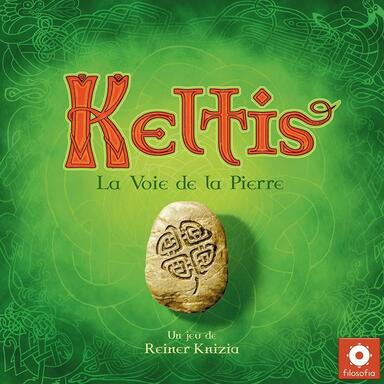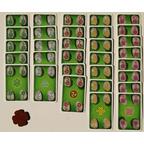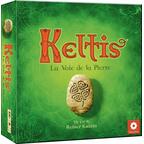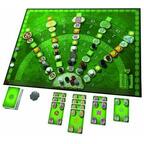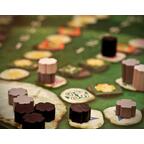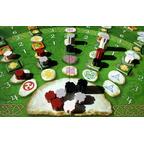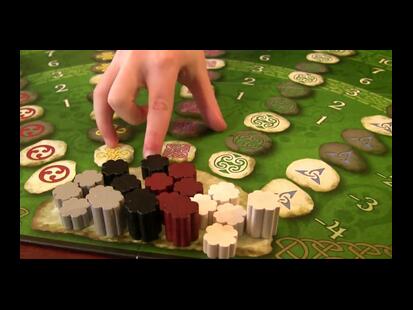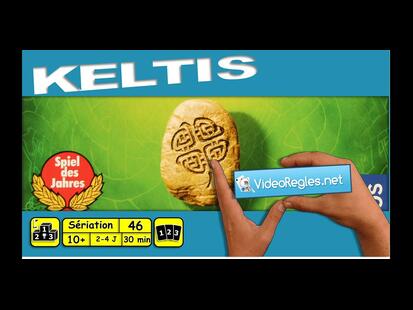Keltis is a game largely inspired by the mechanics of the Lost Cities, adapted to a game for four players. Each player has a hand of eight cards that will allow him to progress on the five tracks of the game board. In turn, a player must either discard or play a card from his hand. The discard is theoretically made up of five packs, one per card color. When discarding, a player puts his card over the card that would have been previously placed. If he decides to play, he puts a card in front of him. If he had not yet placed a card of this suit, he starts a new series. Otherwise, it is installed after the others already installed, respecting the installation rule.
This is very simple: the cards must strictly follow an increasing or decreasing order to be placed. If a player has already rolled a 3 and then a 4, he can no longer roll a 2, for example. On the other hand, he can still put a 4 and of course a higher card. Once a player has determined whether a series will be increasing or decreasing, it remains so for the entire game.
When starting a series, the player advances one of his checkers on the track whose color corresponds. A number of bonuses are spread over the five tracks. Some allow you to move a counter an additional square, others offer victory points. The Stone tiles, on the other hand, are taken by the first player to advance on their squares. After discarding or placing a card, the player draws a new one so that he has eight cards in his hand again.
The game ends as soon as five counters have crossed a line that separates the last three rows of each track. It also stops if the pickaxe is empty. The players then score points according to the squares where their checkers have stopped. However, it is important to be careful because the first three boxes of each series have negative points. Each player also benefits from a special counter that doubles his score. To this total, we must add the victory points gleaned as they go along and the stones that score points according to a geometric progression, knowing that once again, a player loses points if he does not have a stone or only one.
The one with the most points wins the game.
Rule, Educational Sheet ... 2 Files Available2 Files Available
Download the rule for Keltis or any other documents (scenarios, goodies, pedagogical sheet, erratum, ...). 2 PDF files are available. See all available files
Contents of the box : 110 cards (5 colors), 20 figurines (4 colors), 4 clover leaves, 4 counters, 25 Track tiles, 1 game board, 1 game rule.
